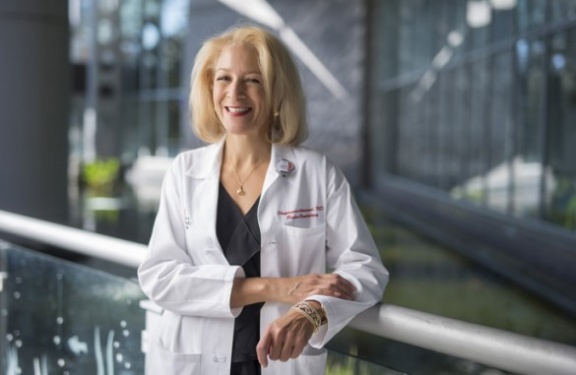It was while inside a loud and odoriferous chromium metal plating shop that Stephanie Spottswood first considered a career in medicine.
At the time, she was serving as a federal workplace safety researcher, touring chemical and manufacturing plants across the country to study whether companies were protecting their workers from hazardous materials.
But at the metal electroplating shop, one of many she had toured, Spottswood encountered a dangerous situation.
“I noticed that the vapors that were emitted off the hot vats of chromic acid were being inhaled by the employees without protection,” said Spottswood, M.D., MSPH. “I knew that those employees were subject to getting nasal cancers and perforation of the nasal septum. This was an occupational hazard that was not being controlled.”
That was how Spottswood started down the path to medical school and eventually to her role years later at Monroe Carell Jr. Children’s Hospital at Vanderbilt, where she now serves as professor of Radiology and Radiological Sciences and Pediatrics.
Guiding her through years of training was a desire to improve the health and well being of others.
“I wanted to be in a position where I could make a difference to individuals and not just do the research,” Spottswood said. “I wanted to have some personal impact on the health of those workers, so I decided to go to medical school to become an occupational physician.”
As a pediatric radiologist, Spottswood serves on a team of a dozen doctors at Children’s Hospital who play a critical role in patient care by reading the results of imaging exams and providing timely interpretations and diagnoses.
That puts Spottswood and other pediatric radiologists in the position to know first, for example, whether a patient’s cough is a symptom of an upper respiratory infection or an asthma exacerbation, she said.
When the results of diagnostic imaging suggest that a patient needs surgery, the radiologists at Children’s Hospital work closely with pediatric surgeons to communicate that information.
“Like other subspecialties in pediatrics, we understand the specific type of disorders that affect children that are not seen in the adult population,” Spottswood said.
“They’re not just small adults. The practice of pediatric imaging requires special knowledge and understanding of children and the disorders that affect them.”
In addition to her role as a pediatric radiologist, Spottswood’s clinical duties also include serving as chief of Pediatric Nuclear Medicine, a role she’s held since joining Vanderbilt in 2005.
Nuclear medicine involves the use of special imaging machines and tiny amounts of radioactive material to allow physicians to diagnose disease, or to determine whether an organ or organ system is functioning properly.
“If you need to know functionally what’s happening in a body part, you really need to resort to nuclear medicine imaging,” Spottswood said. “It has the unique ability to make diagnoses from a physiologic basis that anatomic imaging modalities like CT, MRI and ultrasound cannot demonstrate.
“For example, neonatal hepatitis is difficult, and often impossible, to distinguish from neonatal biliary atresia with standard radiological imaging. Early diagnosis of bilary atresia is important because early surgery results in a more successful outcome for the child. That’s where nuclear medicine imaging can be used to find the answer.”
It was early in her fourth year of medical school when Spottswood realized that she should specialize in radiology.
“I found myself sitting in the radiology suite every night looking at images,” she said. “I had previously studied radiation physics in graduate school, and I was enthralled with the physics behind the images as well as the impact they made clinically, and I just knew I had to be a radiologist.”
Specializing in pediatric radiology was a way for Spottswood to make an impact on patients very early in their lives.
“I may come into the hospital in the middle of the night to image or relieve a bowel obstruction, which can save a child from life-long debilitating disease,” she said. “There are many ways that a pediatric radiologist can make a big impact on a the life of a young infant or child.”
In addition to that, Spottswood has instituted a women’s career development program to mentor young female radiology faculty at Vanderbilt, to help them reach their academic goals. She also stays academically active, teaching medical students and residents and periodically writing manuscripts for journal publication.
“I arrived in pediatric radiology through a circuitous route, but I am grateful to have found a discipline which utilizes cutting-edge technology while fulfilling my desire to improve the health and well-being of others,” Spottswood said.
“I am additionally fortunate to have an opportunity to do so in a such a strong, well-respected academic institution.”


